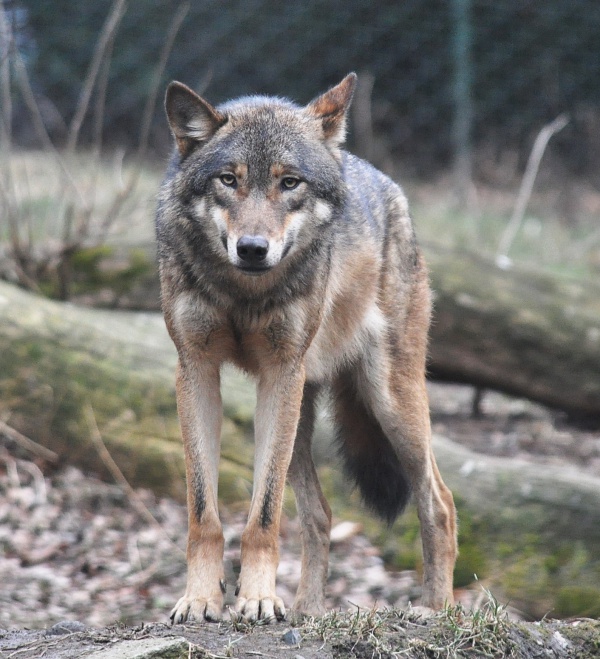Facts About Gray wolf
The wolf, also known as the gray or grey wolf, is a captivating and majestic canine native to Eurasia and North America. There are over thirty recognized subspecies of Canis lupus, with the term "gray wolf" generally referring to the wild, non-domesticated varieties. These wolves are the largest members of the Canidae family, with males averaging around 88 pounds (40 kg) and females about 82 pounds (37 kg). They have distinctive features such as less pointed ears and muzzles compared to other Canis species and can even hybridize with coyotes and golden jackals. Their fur often exhibits a mix of white, brown, gray, and black, while Arctic wolves are nearly entirely white.
Wolves are highly social animals, living in close-knit family units that typically consist of a mated pair and their offspring. They are territorial creatures, often engaging in disputes over territory, which is one of the primary causes of their mortality. Wolves are primarily carnivorous, hunting large wild hoofed mammals, smaller animals, livestock, carrion, and even scavenging garbage. They are also susceptible to various diseases, including rabies.
As of 2003, the global wild wolf population was estimated at around 300,000, and they are classified as Least Concern by the IUCN. Wolves have a complex relationship with humans; they are both feared and respected in different cultures. Although fear of wolves is common, actual attacks on humans are rare and usually involve rabid animals.
The word "wolf" in English is derived from the Old English "wulf" which in turn comes from the Proto-Germanic "wulfaz" and Proto-Indo-European "wĺ̥kʷos." Wolves have played a significant role in human culture, often appearing in names, stories, and mythology.
Carl Linnaeus first classified the wolf as Canis lupus in 1758, and subsequent studies have identified numerous subspecies. Genomic research has shown that modern wolves and dogs share a common ancestor, with significant gene flow between wolves and other canids like golden jackals and coyotes.
Physically, wolves are well-adapted to their environments. They have a large, muscular build, long legs, and dense winter fur. Their broad snout, short ears, and strong jaws with bone-crushing teeth make them formidable predators. Their size can vary depending on their geographic location, with larger wolves typically found in higher latitudes.
Wolves are incredibly adaptable, inhabiting a range of environments such as forests, tundras, deserts, and mountains. Their survival largely depends on the availability of prey and the level of human activity in the area.
Their diet mainly consists of large ungulates, but they also hunt smaller mammals, birds, and occasionally consume vegetation. Wolves are skilled hunters, often working in packs to take down prey much larger than themselves.
Wolves interact with other predators, usually dominating smaller canids and competing with larger ones like bears and tigers. Their social structure is organized around pack dynamics, featuring a clear hierarchy and strong family bonds. Packs are territorial, using vocalizations and scent marking to communicate and defend their territory.
When it comes to reproduction, wolves are monogamous, and females give birth to litters in dens. The entire pack helps raise the pups, teaching them to hunt and survive as they mature.
Wolves face various health challenges, including viral and bacterial diseases and parasitic infections. Despite these obstacles, wolf populations have shown remarkable resilience and adaptability.
Conservation efforts have helped stabilize wolf populations in many areas, though they still face threats from habitat loss, human-wildlife conflict, and hunting. In North America, wolves are protected in many regions, and their populations are rebounding in some areas. In Eurasia, legal protections vary, but wolf populations are generally stable or increasing in many countries.
Wolves hold rich cultural significance, appearing in folklore, mythology, literature, and heraldry. They have been both feared and revered throughout history, symbolizing various traits and values in different cultures.
Human-wolf conflicts, particularly regarding livestock predation, remain a significant challenge. Efforts to mitigate these conflicts include compensation programs and the use of guardian dogs. Although wolf attacks on humans are rare, they can occur, primarily involving rabid wolves or those accustomed to human food.
